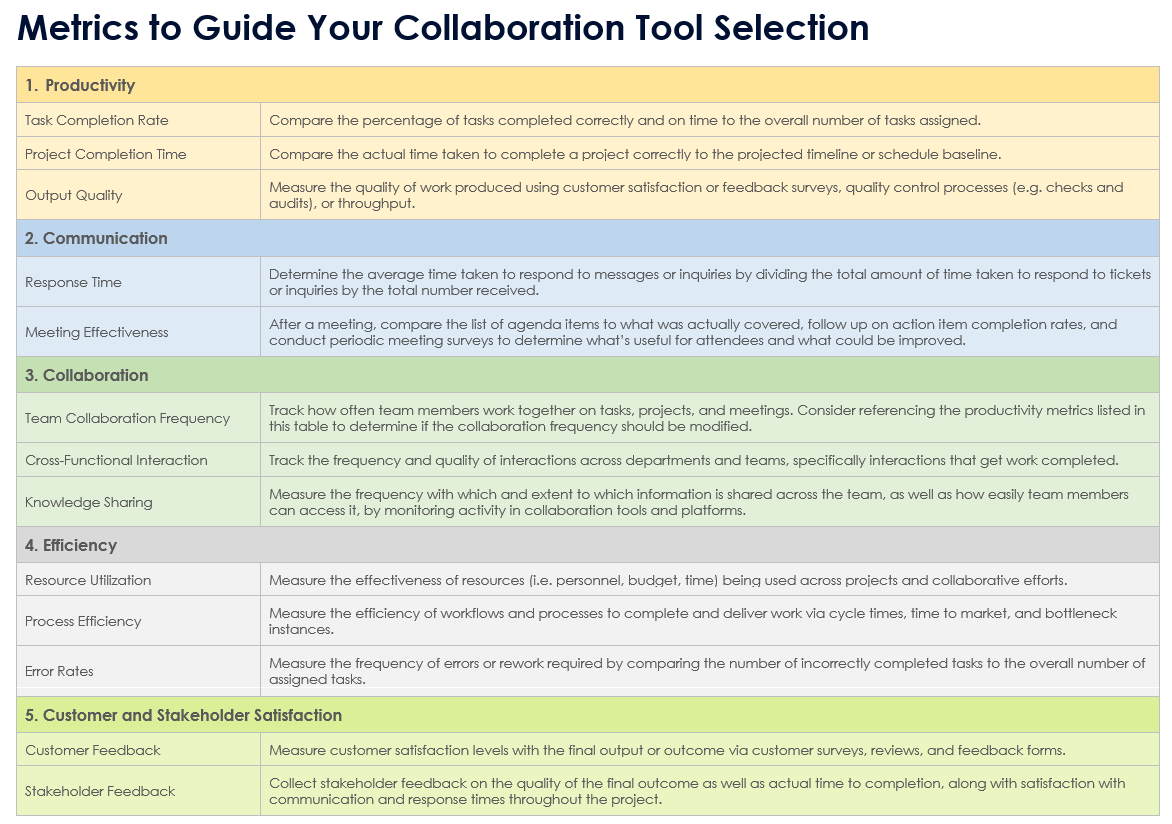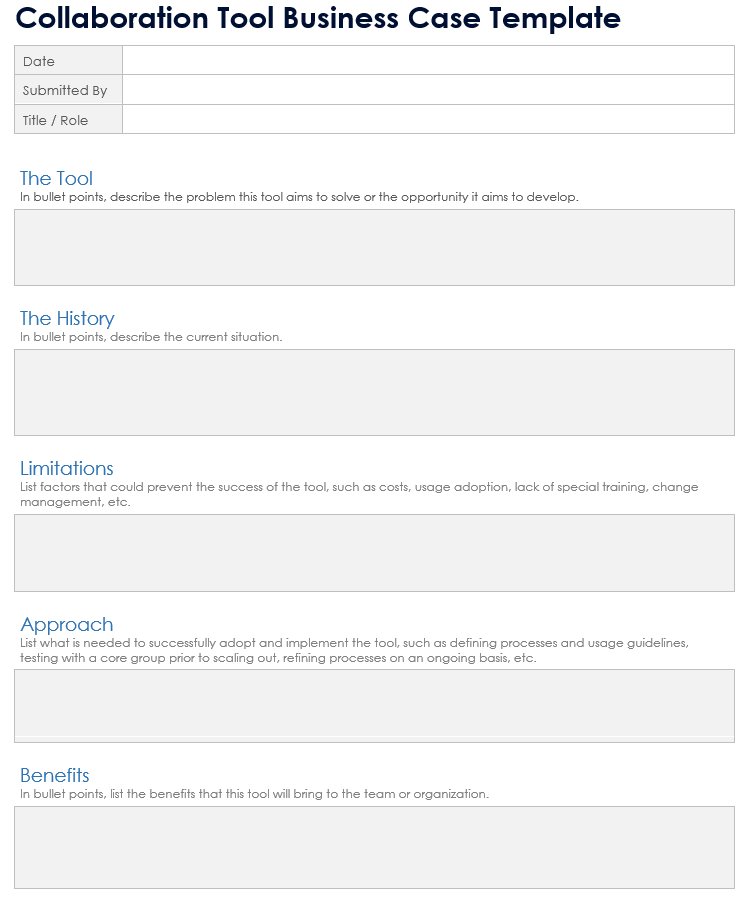Why Is Workplace Collaboration Important?
Workplace collaboration helps create a work culture that benefits everyone. It helps ensure that teams stay aligned on tasks, project goals, and schedules, leading to more efficient and cohesive workflows. By working together, teams can develop better ideas and solutions.
Collaboration also enhances problem-solving by allowing teams to approach challenges from multiple angles, streamlining processes, and improving communication. When team members actively listen to and learn from each other, they can more effectively achieve their goals. This collective effort not only boosts individual contributions but also fosters a strong sense of community and connection within the workplace.
In a 2024 executive brief by i4cp, The Team Network Effect™: How Precision Collaboration Unleashes Productivity, researchers revealed that “the average team could increase productivity by an astonishing 39 percent if they improved collaboration.” They also found “that 80 percent of teams fall short of reaching their full productivity potential due to collaborative dysfunctions.”
In the long run, the effort invested in building a collaborative environment pays off with a more engaged and productive team. The relationships and trust formed through collaboration contribute to a supportive work atmosphere, where everyone feels valued and motivated to contribute their best.
Learn more in this beginner’s guide to teamwork and collaboration.
Benefits of Workplace Collaboration
Workplace collaboration offers a wide range of advantages that can significantly enhance both team performance and overall business success. From fostering innovation through diverse perspectives to improving efficiency and job satisfaction, collaboration helps create a productive and positive work environment.
These are some of the most impactful benefits of fostering collaboration in your organization:
Better Decisions: Collaborative teams make more informed decisions by pooling their collective knowledge and focusing on customer needs. This shared decision-making process reduces biases and leads to outcomes that are more aligned with the company’s goals.
Elevated Competitiveness: Collaboration drives both innovation and productivity, making companies more competitive in their industries. By leveraging the collective strengths of their teams, businesses can stay ahead of the curve and respond quickly to market changes.
Enhanced Creativity and Innovation: When diverse perspectives come together, they spark innovative ideas and creative solutions that might not emerge from a single viewpoint. This collaborative approach disrupts conventional thinking and ensures that the company benefits from the most effective and imaginative strategies.
Greater Project Capacity: Through collaboration, teams can manage larger projects more effectively by pooling resources and expertise. This expanded capacity allows organizations to take on more ambitious tasks and achieve them with greater efficiency.
Higher Job Satisfaction: Collaborative work environments foster a sense of belonging and value among employees, leading to higher job satisfaction. When team members are actively involved in collaborative efforts, they feel more engaged and committed to the company’s vision, which can reduce turnover and increase overall morale.
Immediate Feedback and Continuous Improvement: Collaboration facilitates a quicker exchange of feedback, allowing teams to refine their work and processes in real time. This continuous cycle of improvement leads to better outcomes and a more agile response to challenges and opportunities.
Improved Leadership Skills: By leading collaborative projects, employees develop essential leadership skills, such as managing different personalities and motivating teams. This experience prepares them to handle complex team dynamics and drive successful outcomes in various situations.
Increased Efficiency: Working together helps streamline processes, reducing the time and effort needed to complete tasks. This boost in efficiency not only improves the bottom line but also allows teams to focus on more strategic, value-added activities that contribute to overall business success.
Less Isolation for Remote Workers: Collaborative practices help remote workers feel more connected and engaged with their teams. This sense of inclusion reduces feelings of isolation and ensures that remote employees can contribute effectively, just like their in-office counterparts.
Review this article on building remote work collaboration effectively for expert tips, best practices, and free tools.More Effective Problem-Solving: By bringing together a variety of insights and experiences, collaborative teams are better equipped to tackle complex problems. The collective expertise of the group allows for more thorough analysis and innovative solutions that might not be possible when working in isolation.
Chase McKee, Founder of Rocket Alumni Solutions, emphasizes the power of strategic team pairing to enhance collaboration and drive business success.
"To build collaboration, I pair complementary teams,” he says. “For example, I matched developers with customer success managers. Through their collaboration, they optimized our platform, resulting in over a 40 percent increase in client retention. I regularly meet with teams to understand their challenges and then connect groups that can help overcome them. As CEO, I also facilitate connections between our creative, PR, and partnerships teams. For instance, I paired them to rebrand a product launch, which led to more than 50 media placements and a 20 percent spike in web traffic. Fostering purposeful connections across teams drives our success."More Learning Opportunities: Collaboration promotes continuous learning as team members share their knowledge and skills. This ongoing exchange of expertise not only enhances individual professional development but also strengthens the overall capabilities of the team, making it more versatile and effective.
Networking Opportunities: Collaboration naturally fosters networking by bringing team members together to share insights and experiences. This interaction builds trust and cooperation, laying the foundation for strong professional relationships that are beneficial for future projects and career growth.

Lucas Botzen, CEO and HR Expert at Rivermate, shares how involving diverse teams in the development process helped his company achieve outstanding results.
"We implemented a cross-functional project for the development of a new feature on our platform,” he explains. “By bringing together team members from different departments — IT, marketing, and customer service — we designed a solution that addressed both technical requirements and customer needs, while also aligning with market trends. This collaboration led to an extremely successful product launch, resulting in increased customer satisfaction and a 20 percent rise in sales within the first quarter."
Openness to Change: Teams that collaborate well are more adaptable to new challenges and changes in the workplace. This flexibility not only helps the organization stay resilient in the face of disruptions but also encourages a culture that embraces continuous improvement and innovation.
Reduced Conflict: Open communication, a key component of collaboration, helps to minimize misunderstandings and conflicts within teams. By fostering a culture of cooperation, teams can work through disagreements constructively, leading to a more harmonious work environment.
Saving Time: Collaborating allows team members to tap into each other's knowledge and experience, speeding up the completion of projects. This shared expertise, often referred to as cross-sharing, eliminates the need to reinvent the wheel, enabling teams to work more efficiently and meet deadlines more reliably.
Check out this guide to collaborative working for additional resources.
Benefits of Workplace Collaboration Tools
Collaboration tools play a crucial role in modern workplaces, providing the structure and support needed for teams to work together more effectively. These tools offer a range of benefits, from improving project management and communication to boosting productivity and employee engagement.
The following are some of the key advantages of using collaboration tools in the workplace.
- Better Knowledge Sharing: Platforms that allow for easy document sharing and insights help teams build a collective knowledge base. This improved knowledge sharing leads to better decision-making and fosters innovation within the organization.
- Cost Savings: Collaboration tools can significantly reduce costs associated with travel, office space, and communication infrastructure. By enabling remote work and virtual meetings, businesses can save money while maintaining high levels of productivity.
- Enhanced Communication: Instant messaging, videoconferencing, and other communication tools ensure that team members can connect quickly and clearly. This improvement in communication helps streamline workflows and reduces misunderstandings.
- Enhanced Team Collaboration: By breaking down communication barriers, collaboration tools promote inclusive teamwork. They allow diverse teams to leverage each other’s strengths, resulting in more effective collaboration and better outcomes.
- Improved Project Management: Collaboration tools centralize project tasks, making it easier to track progress and manage deadlines. This ensures that everyone is kept up to date, leading to smoother project execution and fewer delays.
- Increased Productivity: Automation of routine tasks and simplified access to resources through collaboration tools allow teams to concentrate on high-value activities. This focus on essential tasks helps boost overall productivity.
Ira Prevalova, Marketing Director at Adverity, focuses on collaboration and cohesive workflows to create more effective marketing campaigns and to improve business outcomes.
"I led a project to integrate data-driven marketing strategies across various departments,” she says. “By implementing collaborative tools and encouraging regular interdepartmental meetings, we created a more cohesive workflow. This approach resulted in better-aligned marketing campaigns, improved data sharing, and a significant boost in overall team productivity. The success of this initiative was reflected in our ability to launch more targeted and effective marketing campaigns, ultimately driving better business results."
Read more in this guide to collaboration marketing. - Improved Decision Making: Access to real-time data and diverse perspectives through collaboration tools enables teams to make more informed decisions. This leads to actions that are better aligned with organizational goals and teams that are more adaptable to changing circumstances.
- Increased Employee Engagement: Collaboration tools enhance employee engagement by making it easier for team members to stay connected with their work and colleagues. This increased engagement leads to higher job satisfaction and better overall performance.
Logan Mallory, VP of Marketing at Motivosity, highlights the impact of adopting specific platform features to improve efficiency and team dynamics. His experience demonstrates how real-time feedback and enhanced communication can accelerate project completion and boost employee satisfaction.
"Our adoption of specific platform features significantly improved our efficiency,” he shares. “For example, using our peer recognition feature enabled team members to acknowledge each other's contributions in real time. This practice enhanced morale and fostered a culture of continuous feedback and improvement. During a cross-departmental UI redesign project, this approach led to a 30 percent increase in project completion speed. Enhanced communication and real-time feedback allowed us to address issues promptly and capitalize on diverse perspectives, resulting in innovative solutions and higher employee satisfaction." - Remote Work Facilitation: For remote teams, collaboration tools are essential in maintaining cohesion and productivity. These tools provide the necessary infrastructure for effective remote communication, ensuring that team members stay connected and engaged.
- Scalability and Flexibility: Collaboration tools are designed to scale with businesses, making it easier to manage larger teams and more complex projects. They adapt to the evolving needs of an organization, ensuring effective collaboration as the company grows.
By integrating the right collaboration tools, businesses can enhance team dynamics and drive better results. Find more insights in these articles on improving workplace collaboration and workplace collaboration examples that illustrate these benefits in action.
Understand Your Team’s Success Metrics to Determine the Tools You Need

To determine which tools to use and decide if and how they contribute to success, you should first understand what the success metrics are for your team or organization. Jillian Knoepfel, Content Operations Manager at Smartsheet, shares insights on these essential metrics. In the following table, which summarizes her input, you'll find key success metrics to consider as you evaluate your own tech stack.

Download the Metrics to Guide Your Collaboration Tool Selection for Adobe PDF
Building the Business Case for Workplace Collaboration Tools
Implementing the right workplace collaboration tools can significantly enhance your team’s productivity, communication, and overall success. However, gaining buy-in from stakeholders often requires a well-structured business case. By clearly outlining the benefits and addressing potential challenges, you can make a compelling argument for adopting new tools.
“When making a business case for workplace collaboration tools, be sure to highlight both quantitative and qualitative benefits,” explains Botzen. “Start by demonstrating how the tool will save time, reduce operational costs, and increase project efficiency, using real-life examples and case studies. Emphasize the positive impact your proposal will have on morale and employee engagement, as well as the potential for sparking innovation through improved communication. Testimonials from teams that have successfully implemented these tools can also be very powerful.”
Collaboration Tool Business Case Template

Use this template to build a strong case for implementing a new collaboration tool in your organization. It guides you through key benefits of investing in a workplace collaboration tool, such as identifying the problem or opportunity the tool addresses, recognizing any potential limitations, and highlighting the benefits the tool will bring to your team.
Download the Collaboration Tool Business Case Template for
Microsoft Word
|
PowerPoint
Achieve Effective Workplace Collaboration with Smartsheet for Work Management
Empower your people to go above and beyond with a flexible platform designed to match the needs of your team — and adapt as those needs change.
The Smartsheet platform makes it easy to plan, capture, manage, and report on work from anywhere, helping your team be more effective and get more done. Report on key metrics and get real-time visibility into work as it happens with roll-up reports, dashboards, and automated workflows built to keep your team connected and informed.
When teams have clarity into the work getting done, there’s no telling how much more they can accomplish in the same amount of time. Try Smartsheet for free, today.


